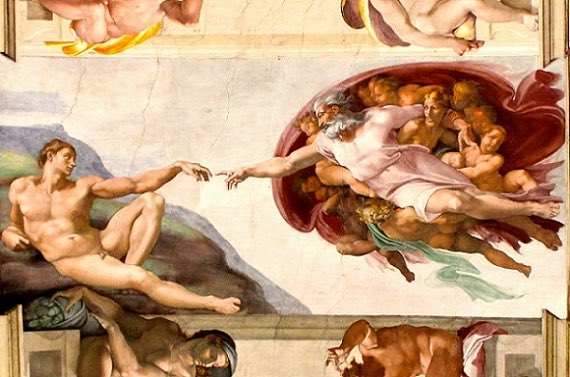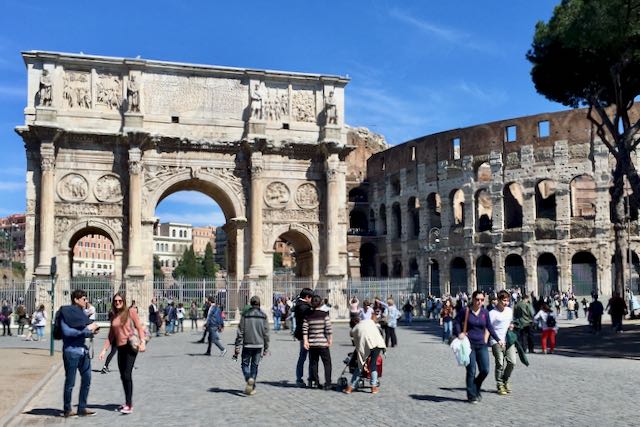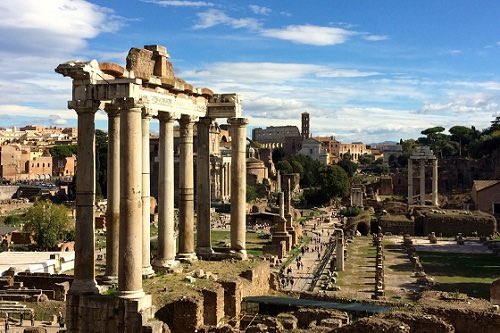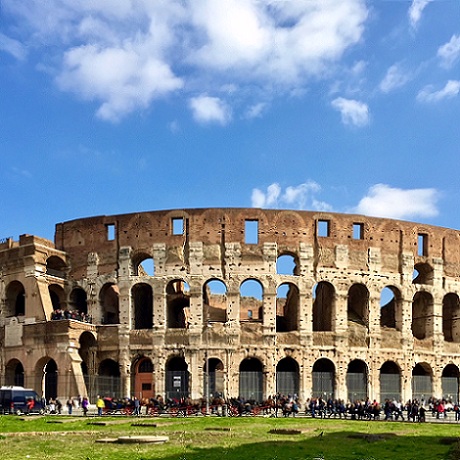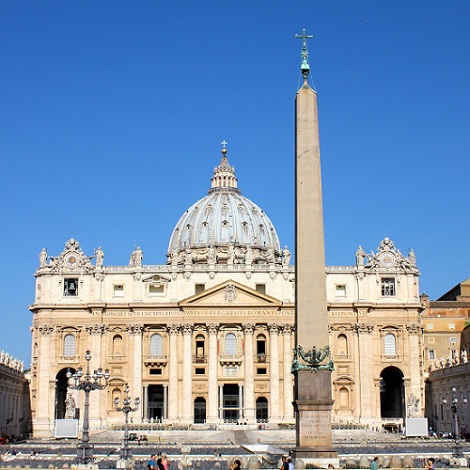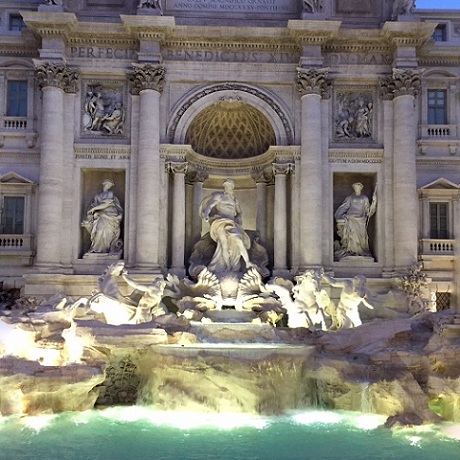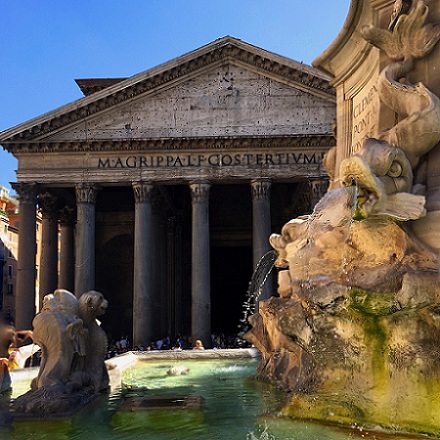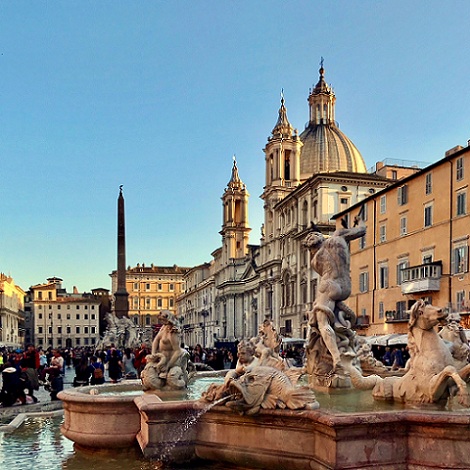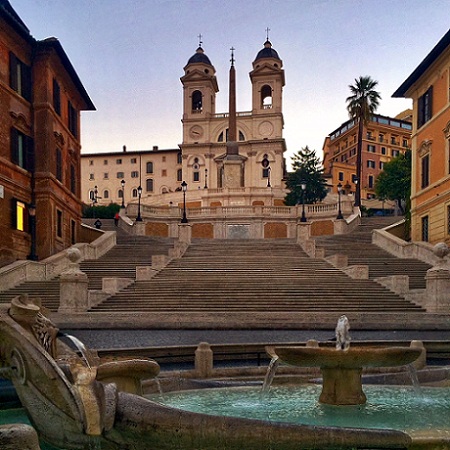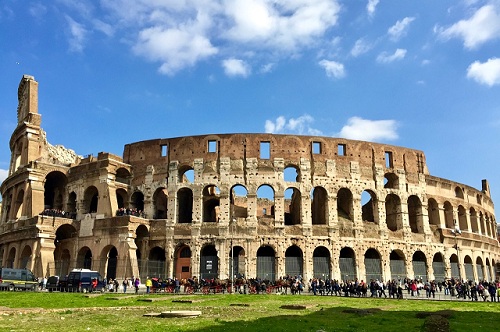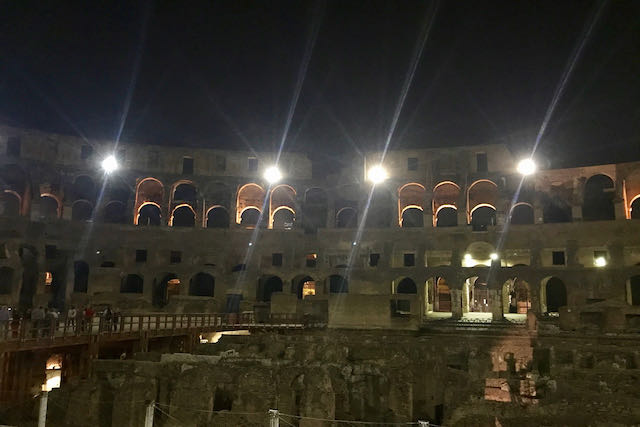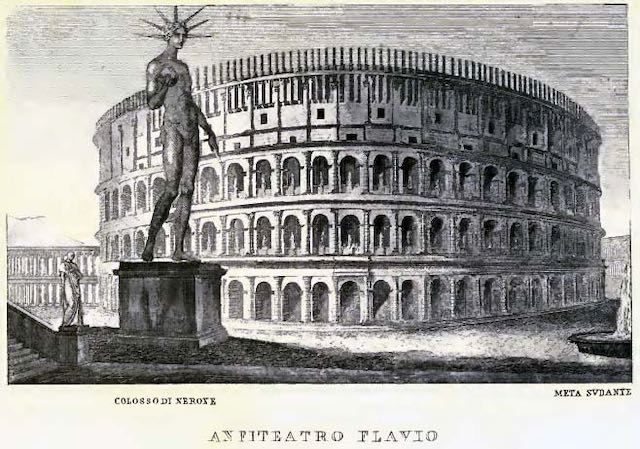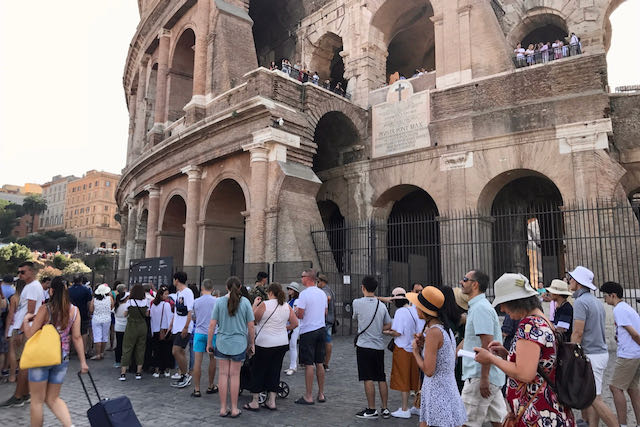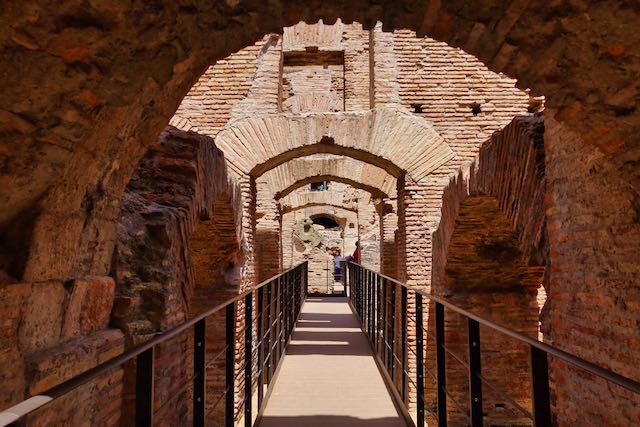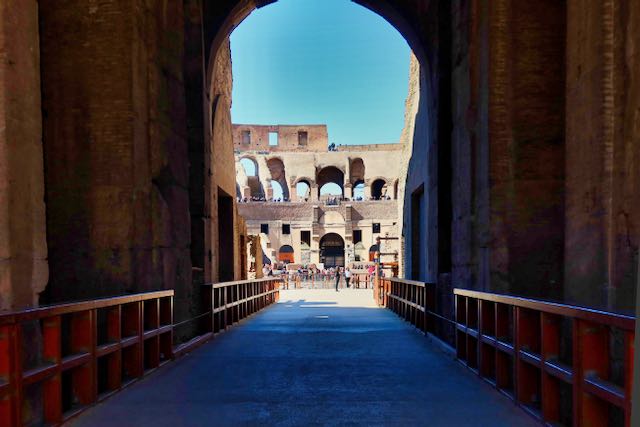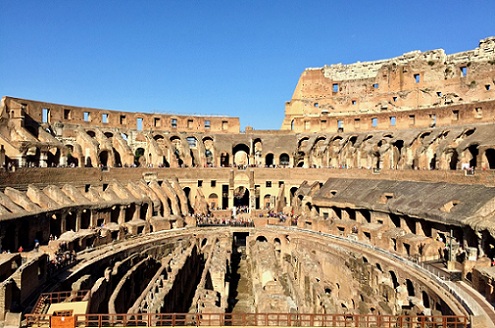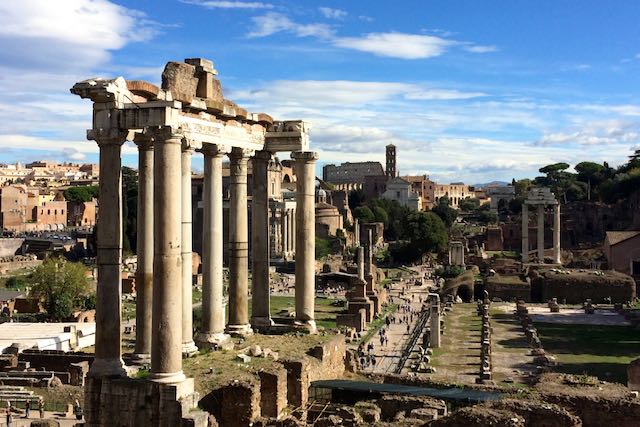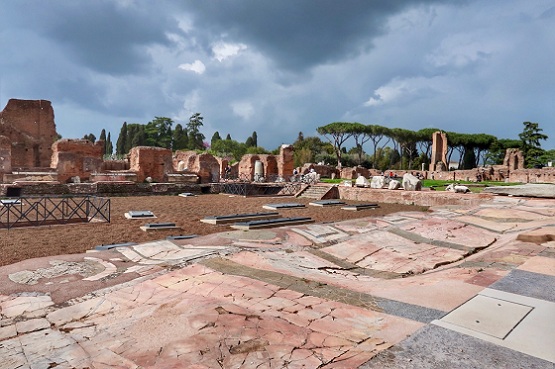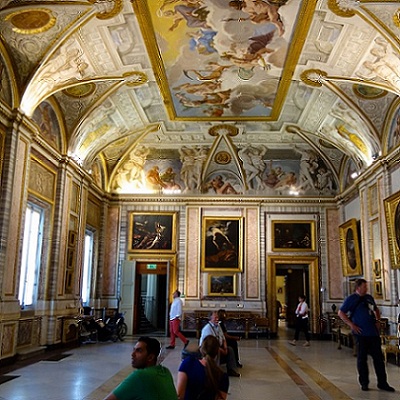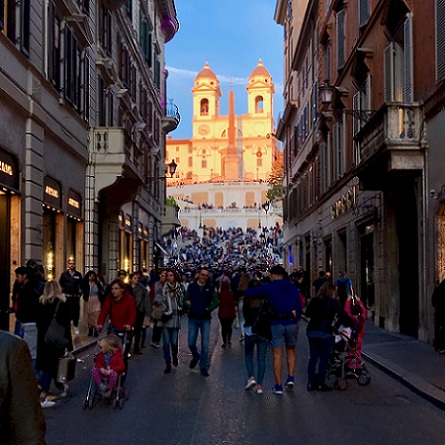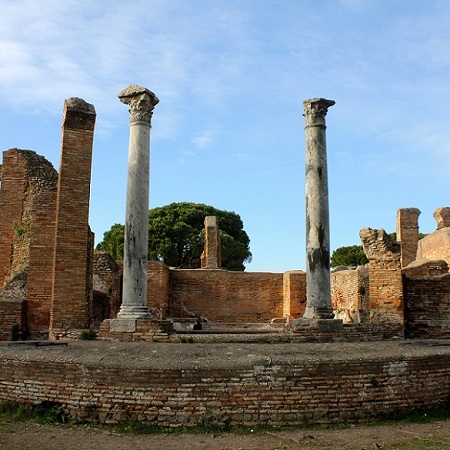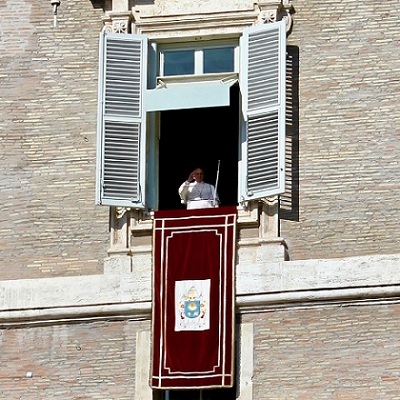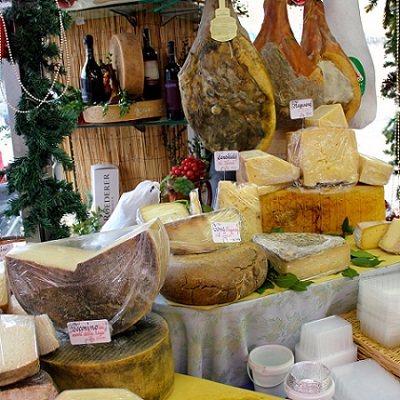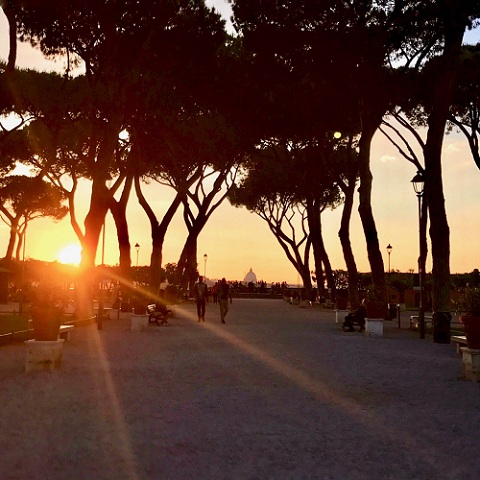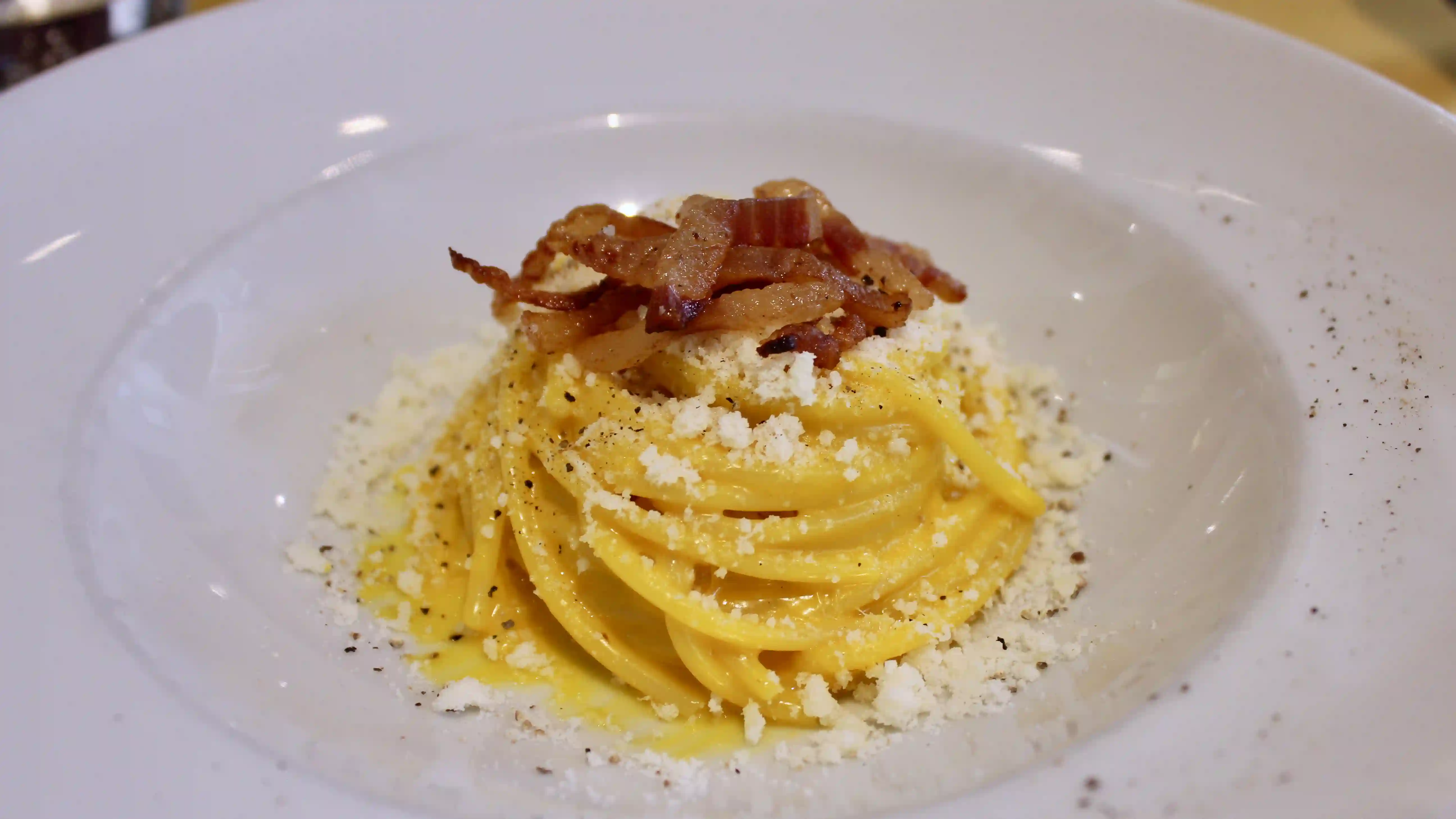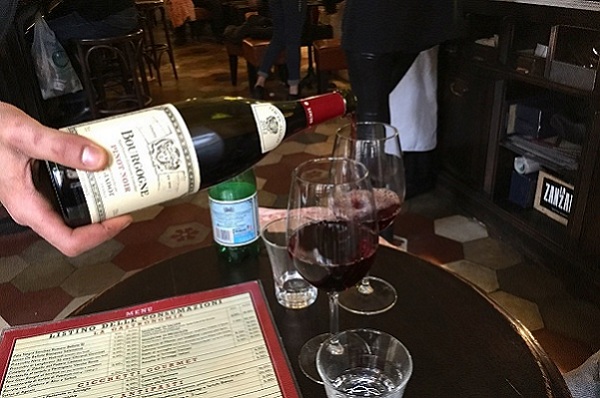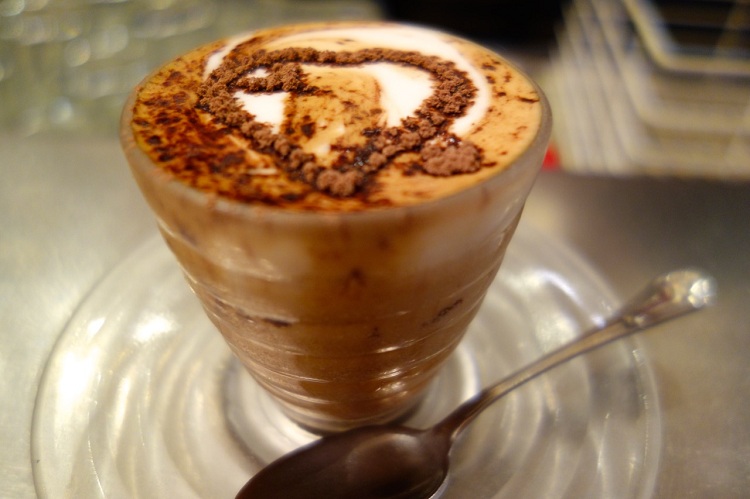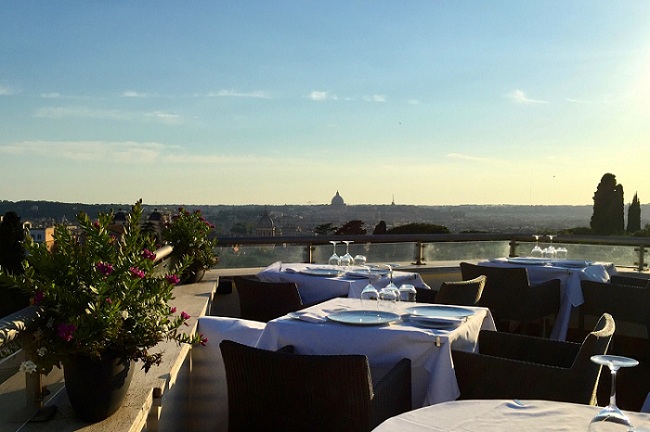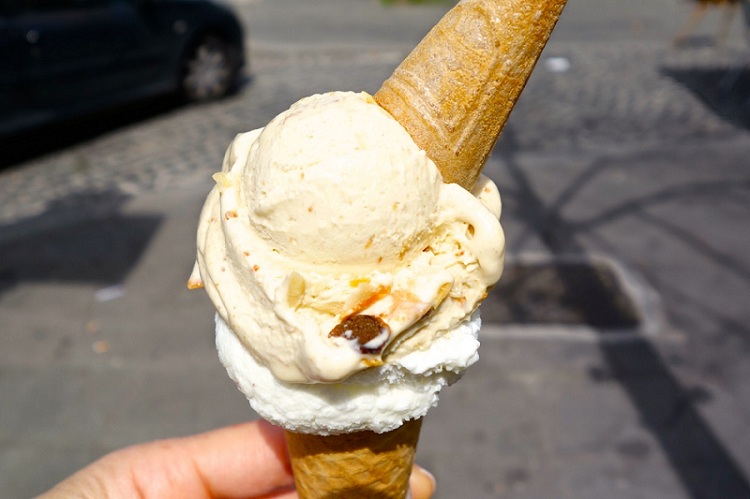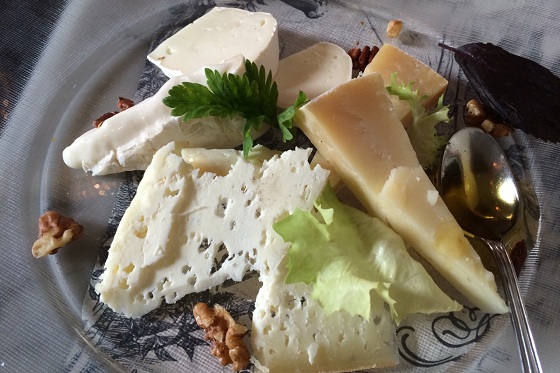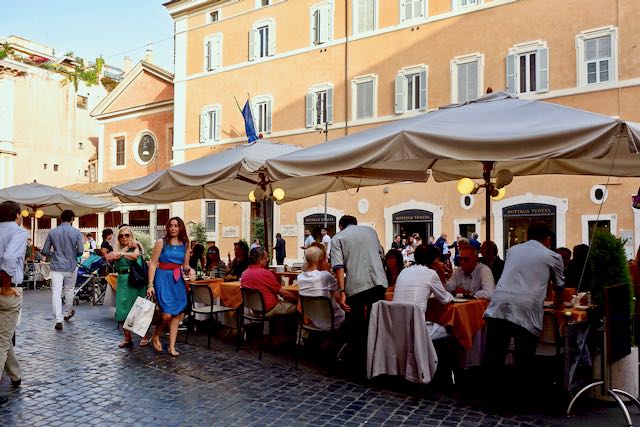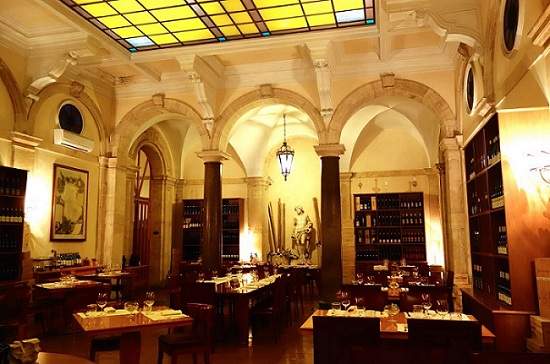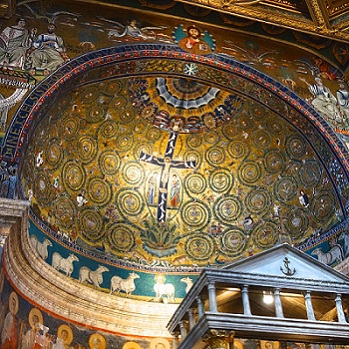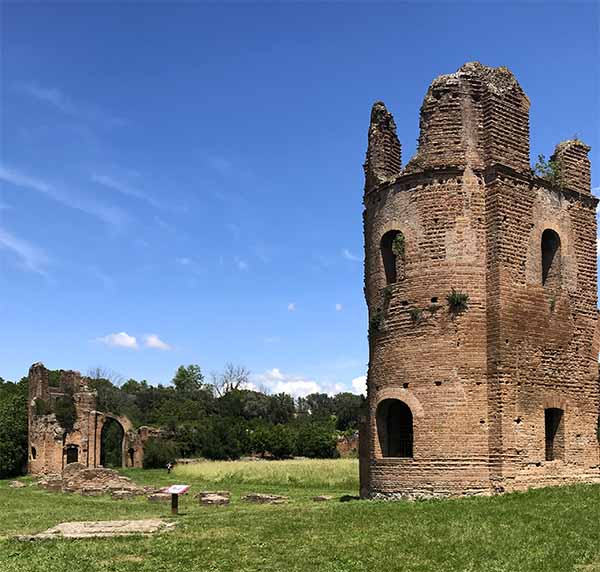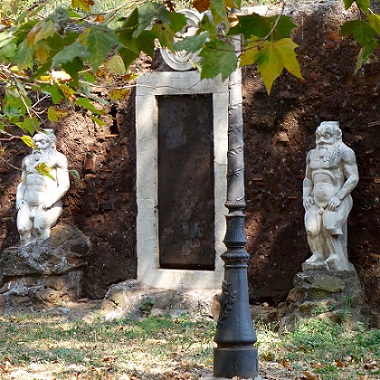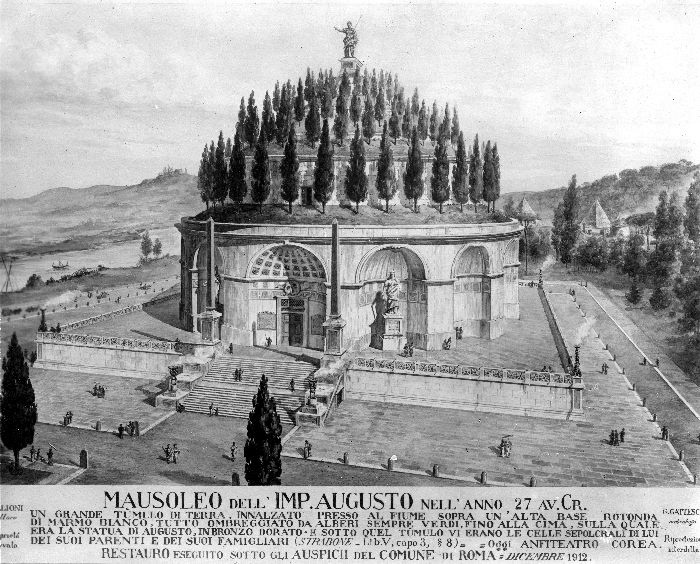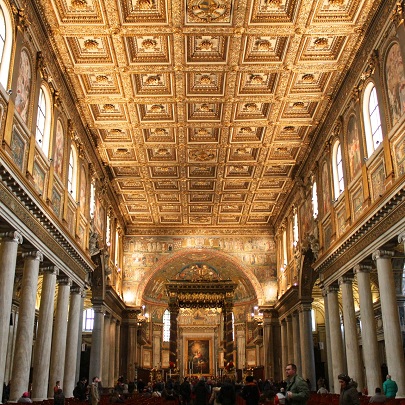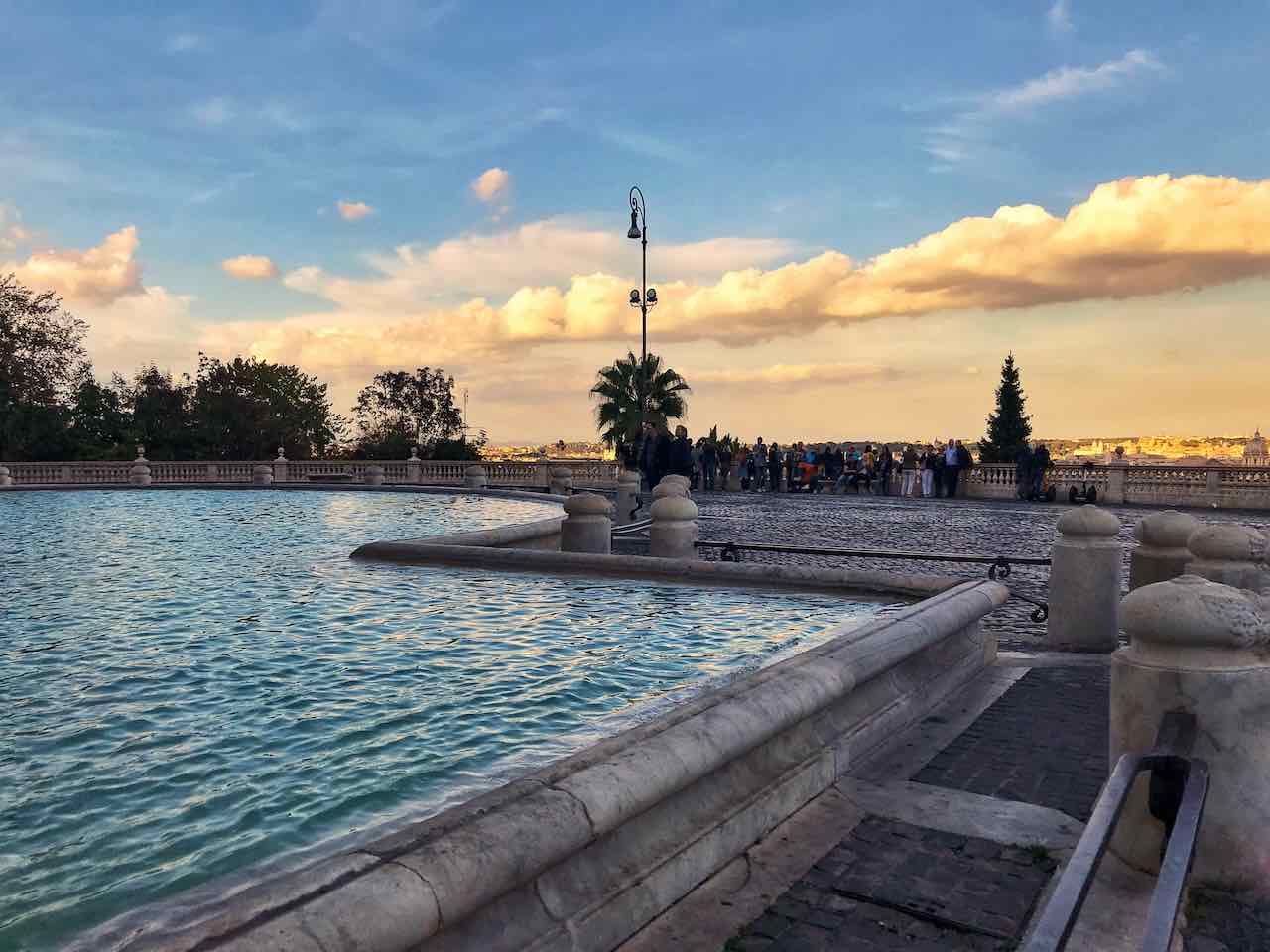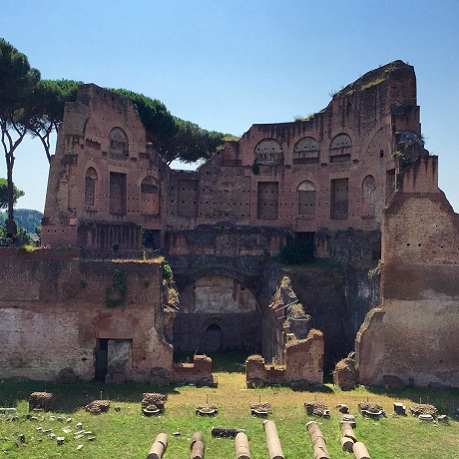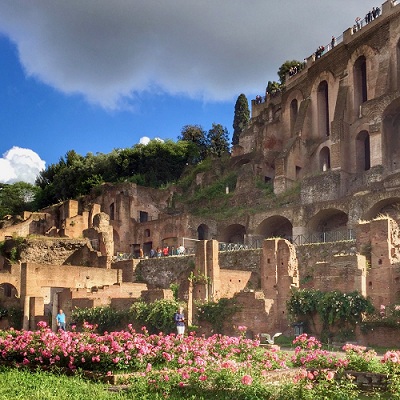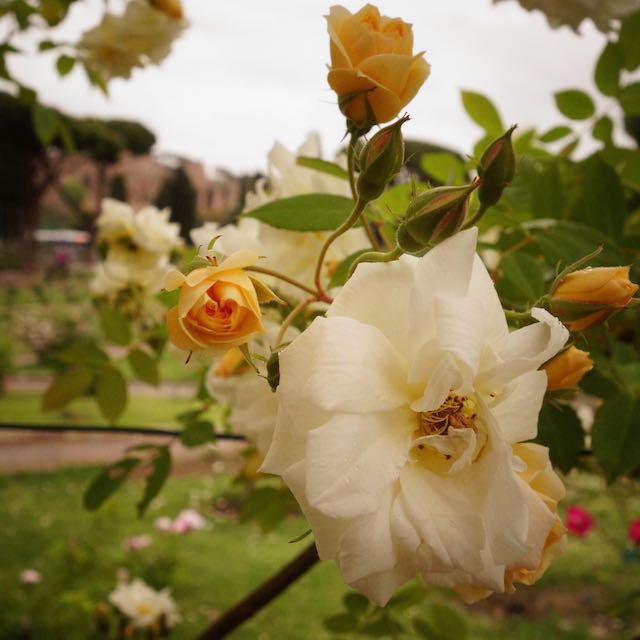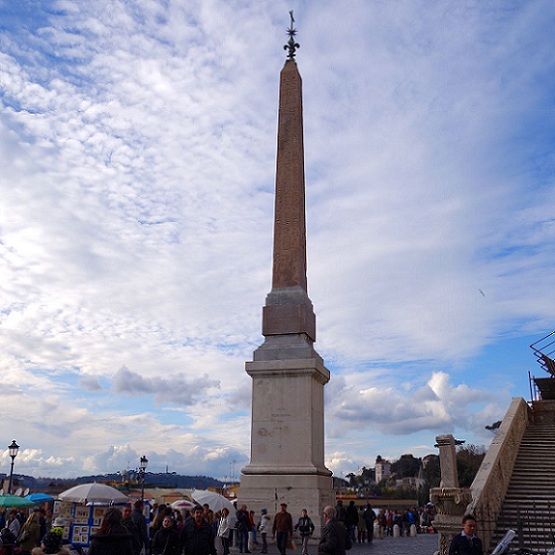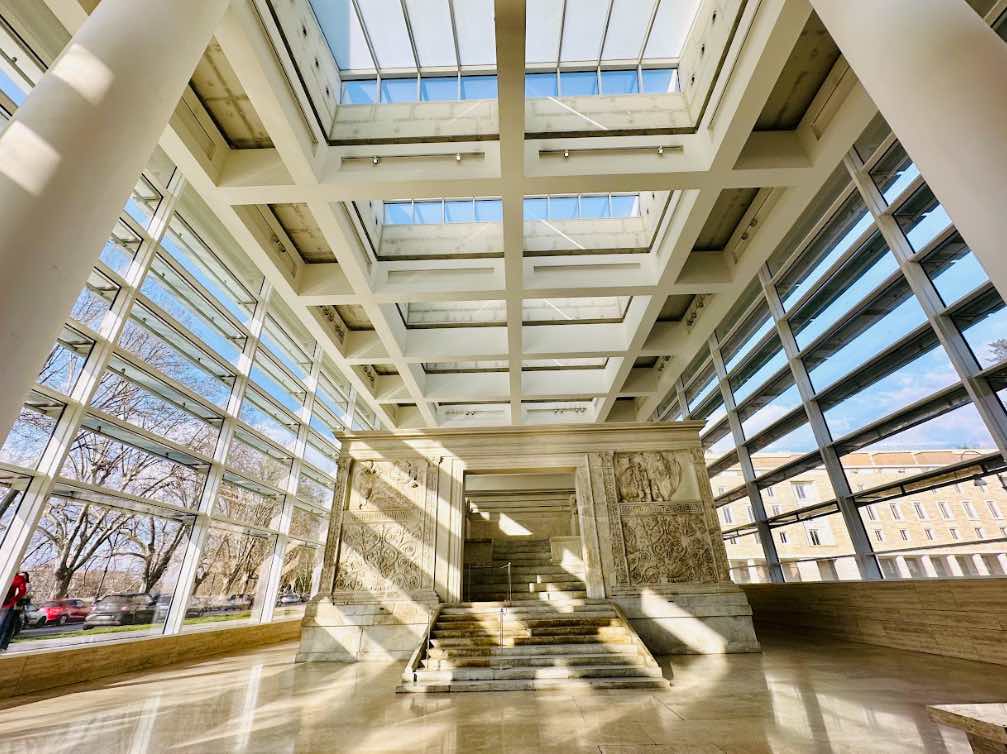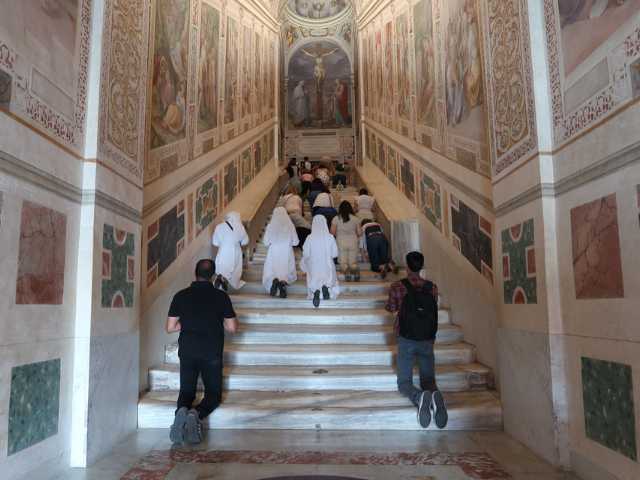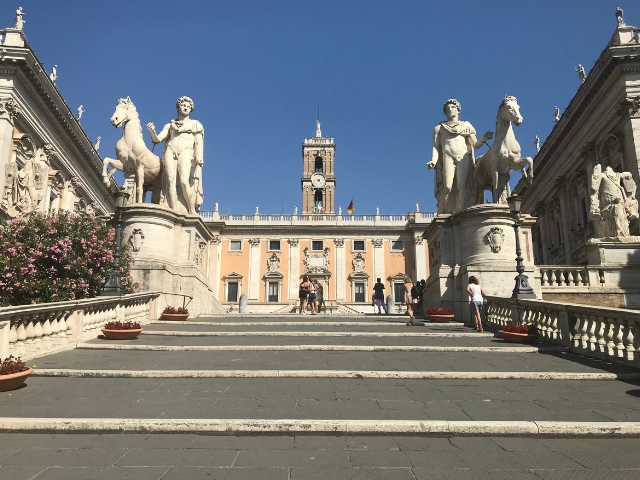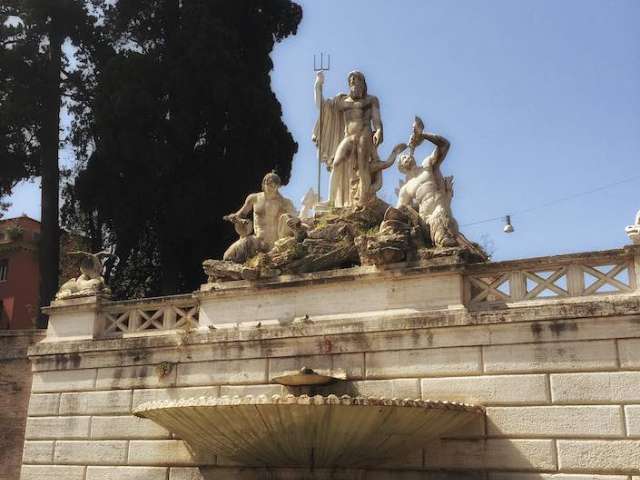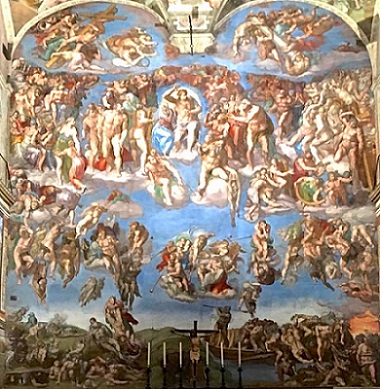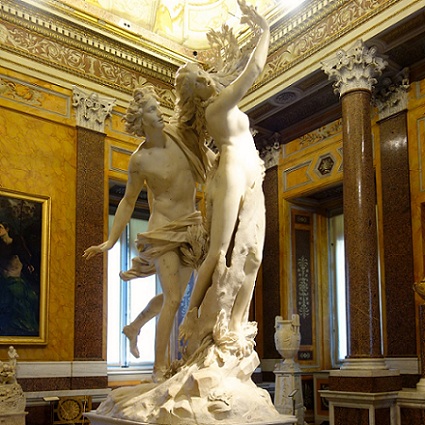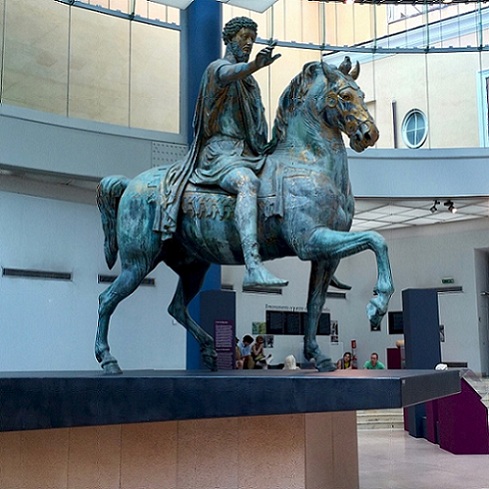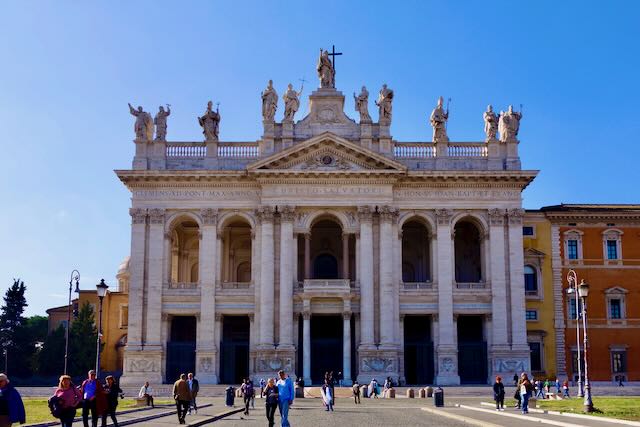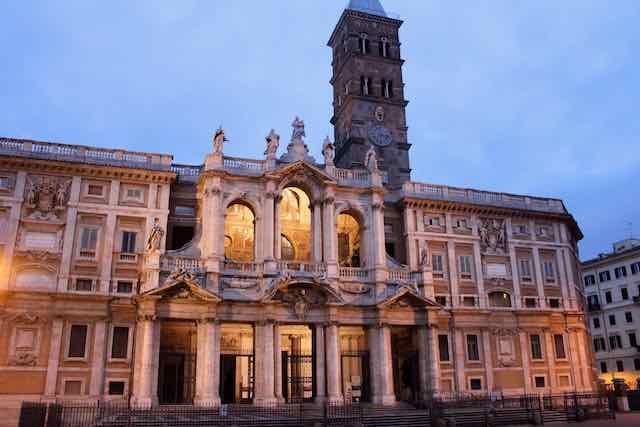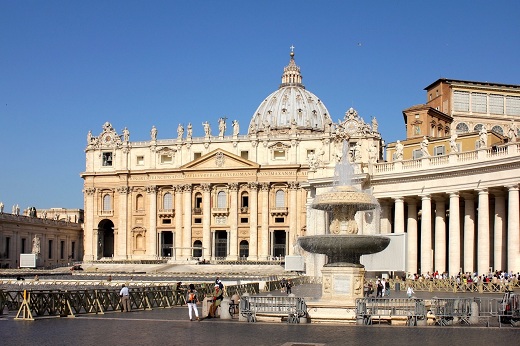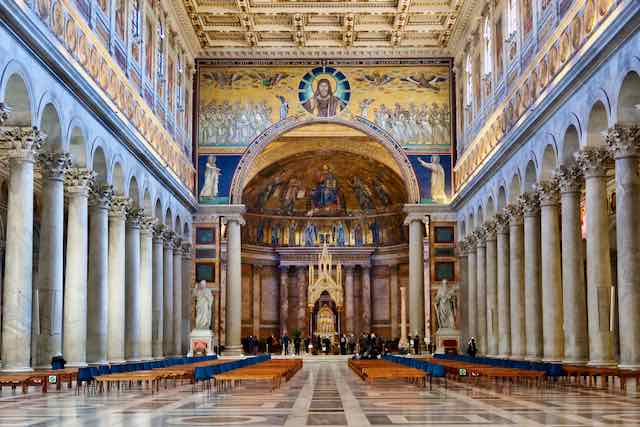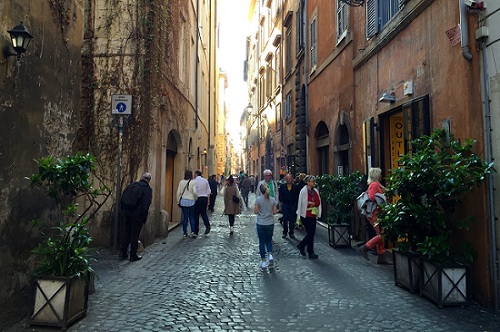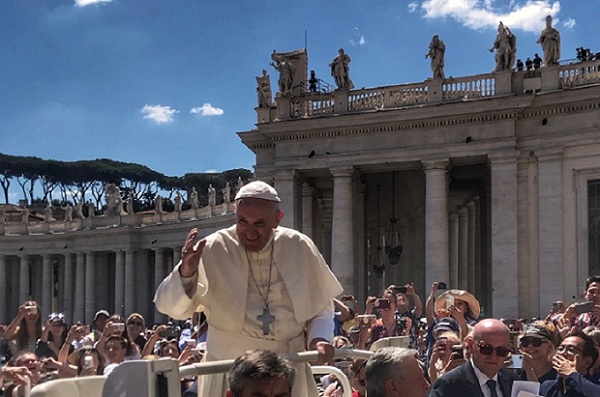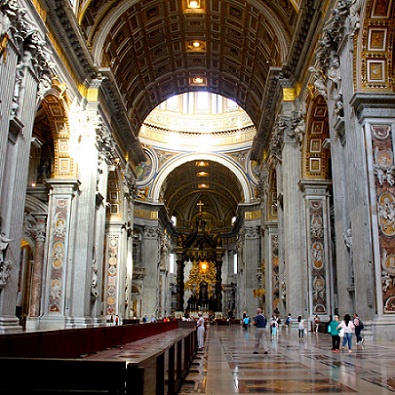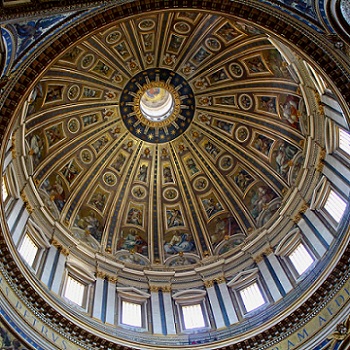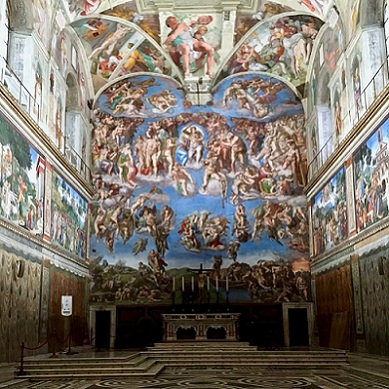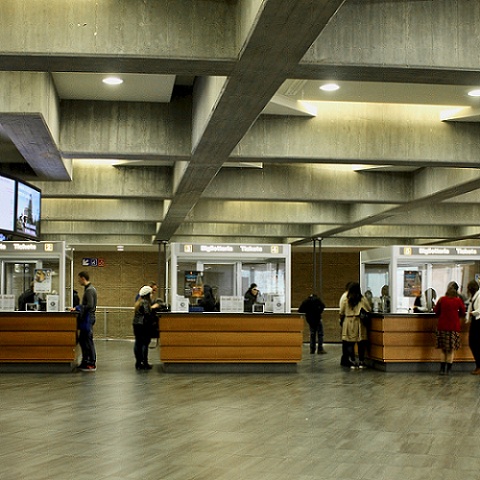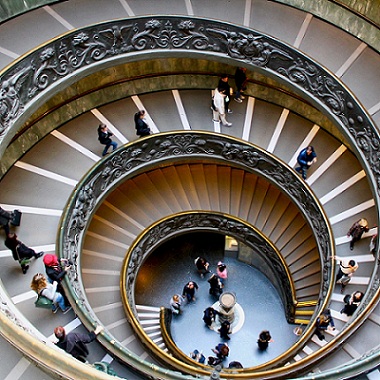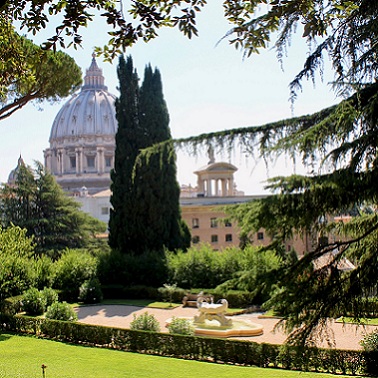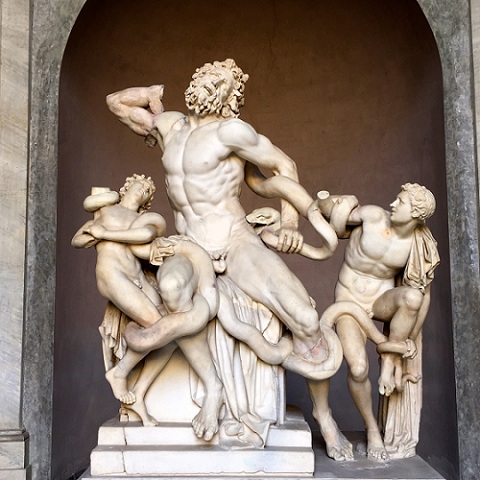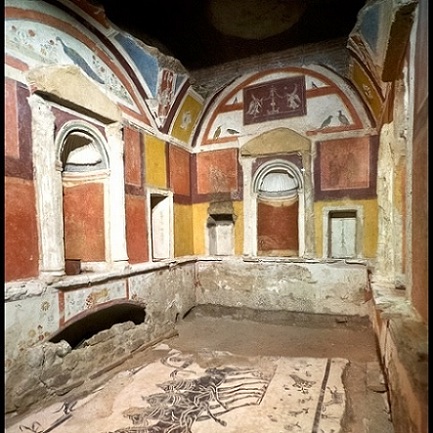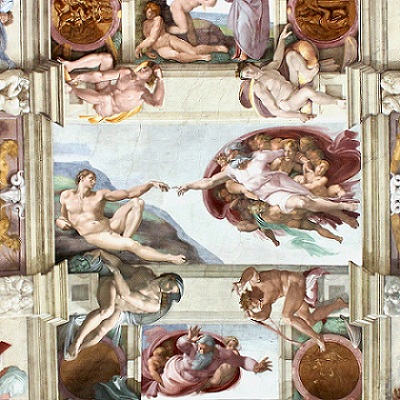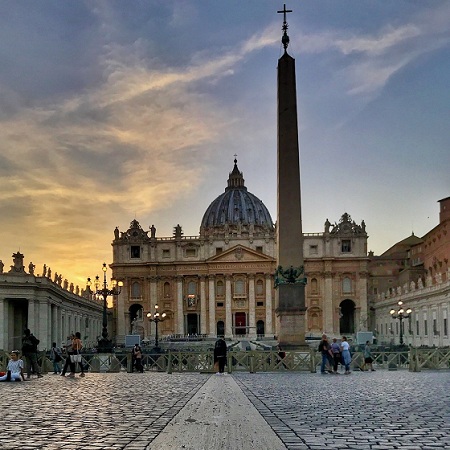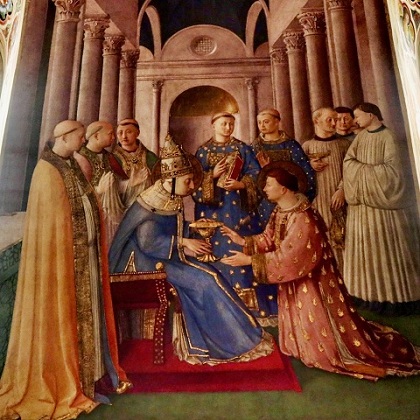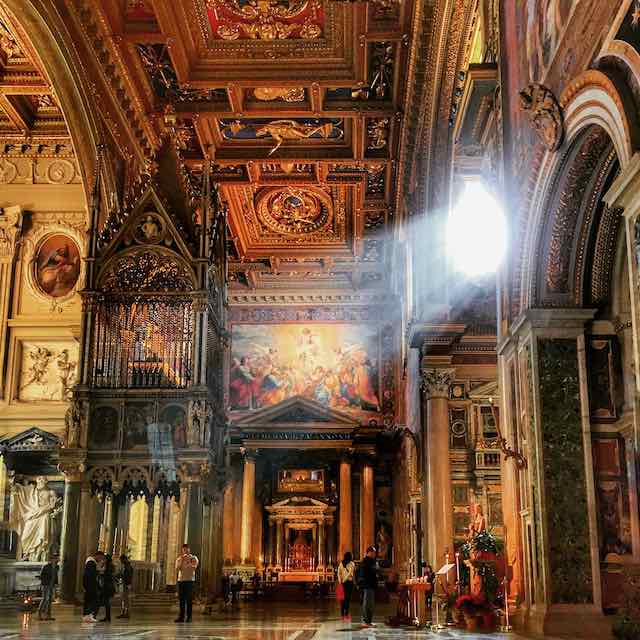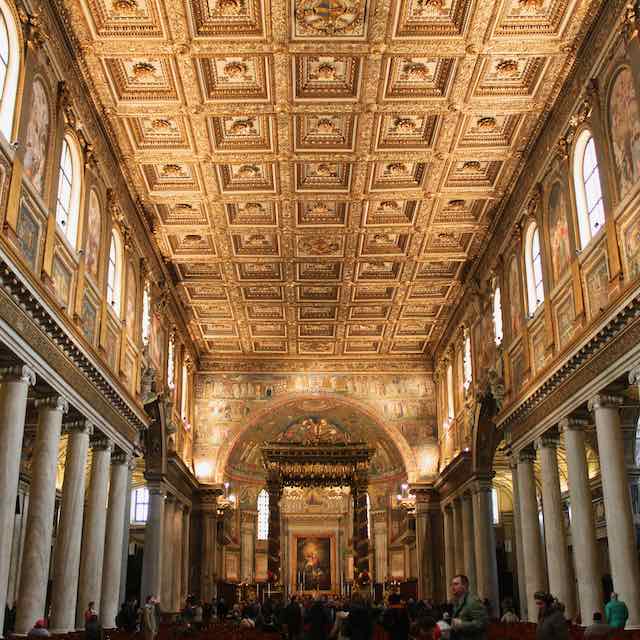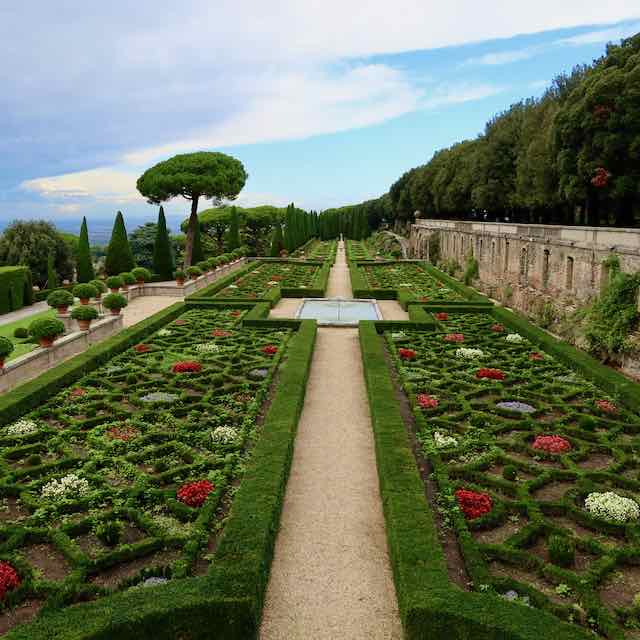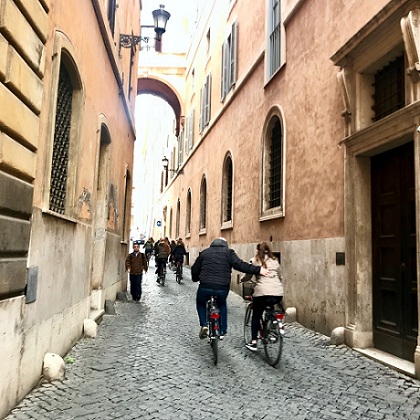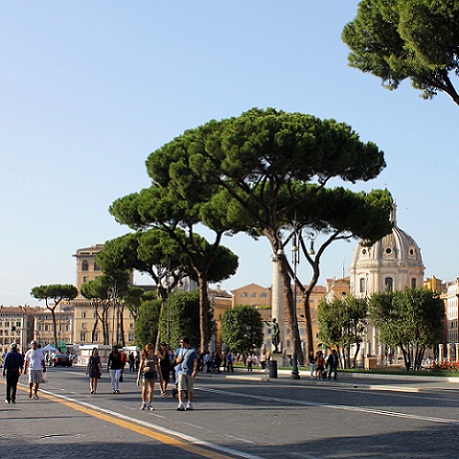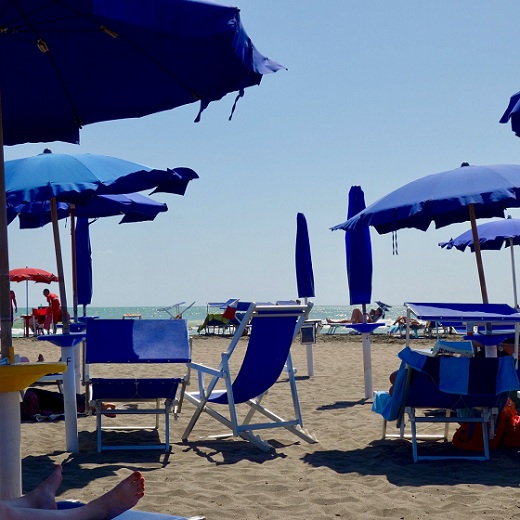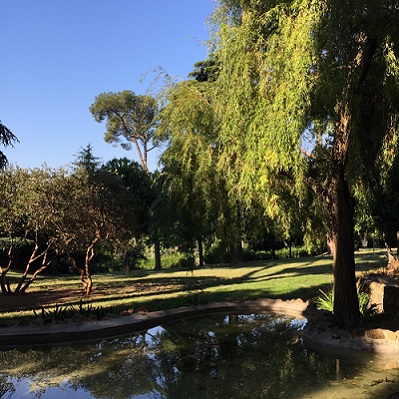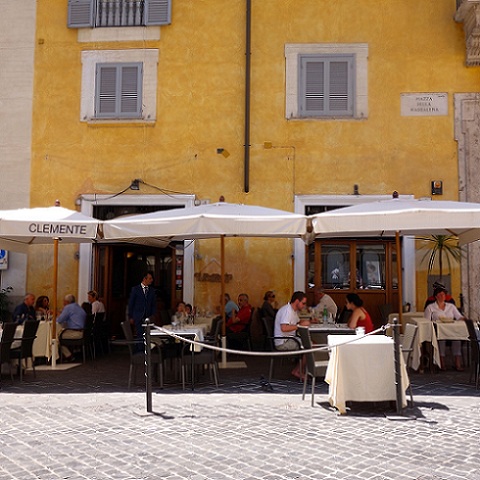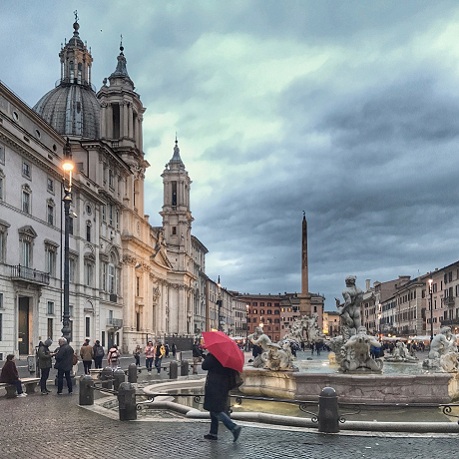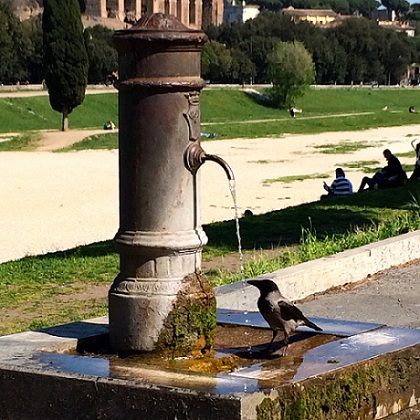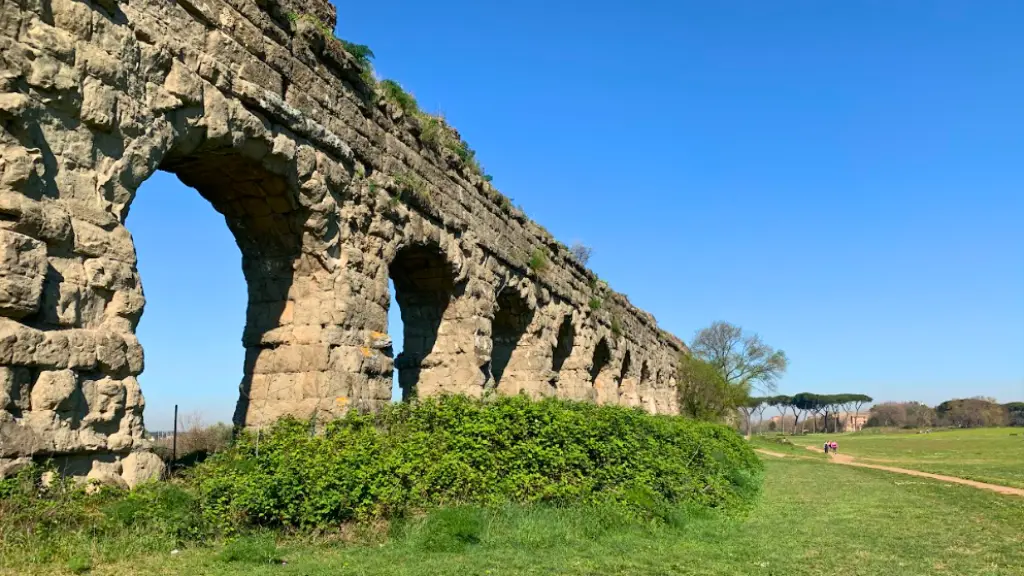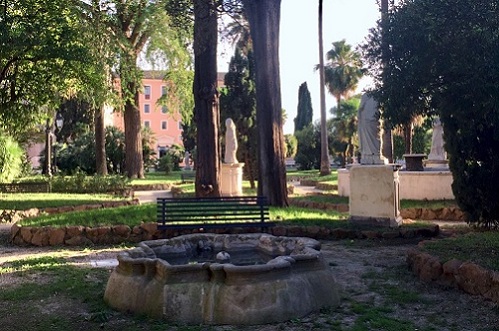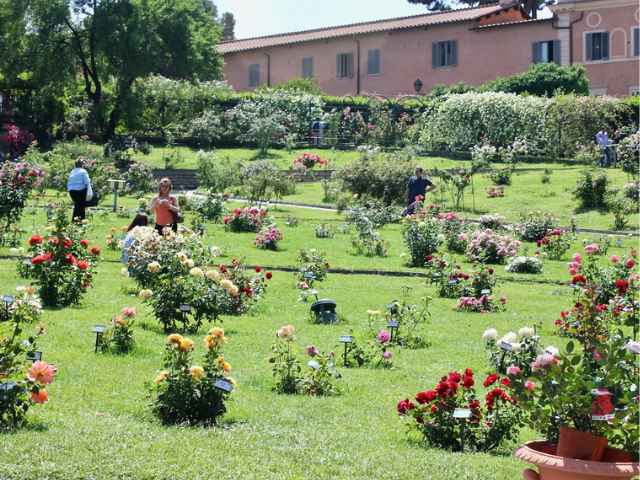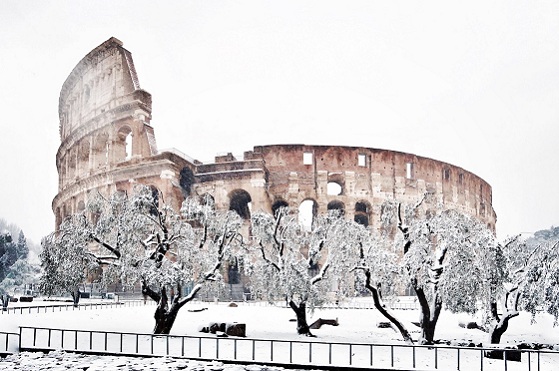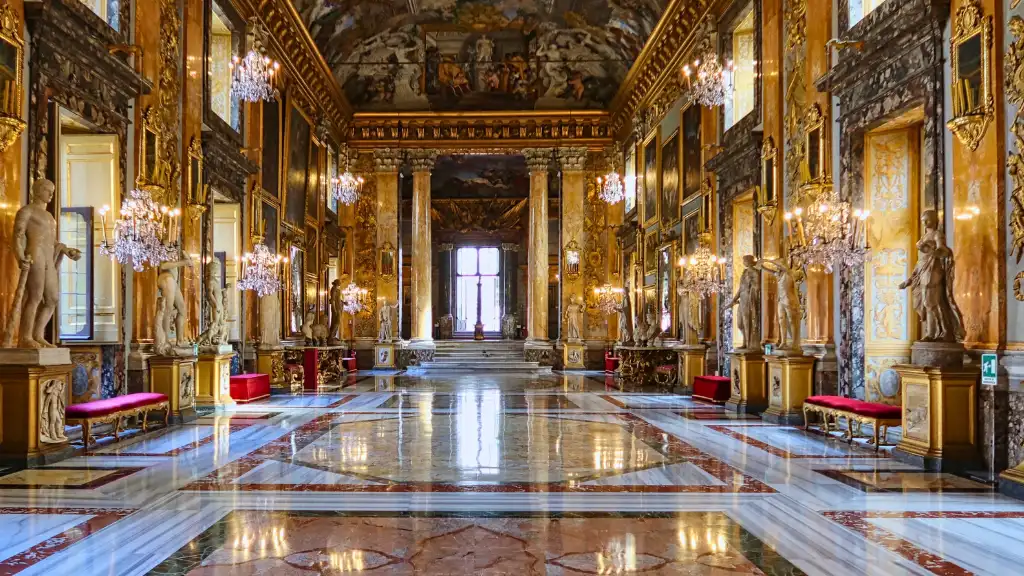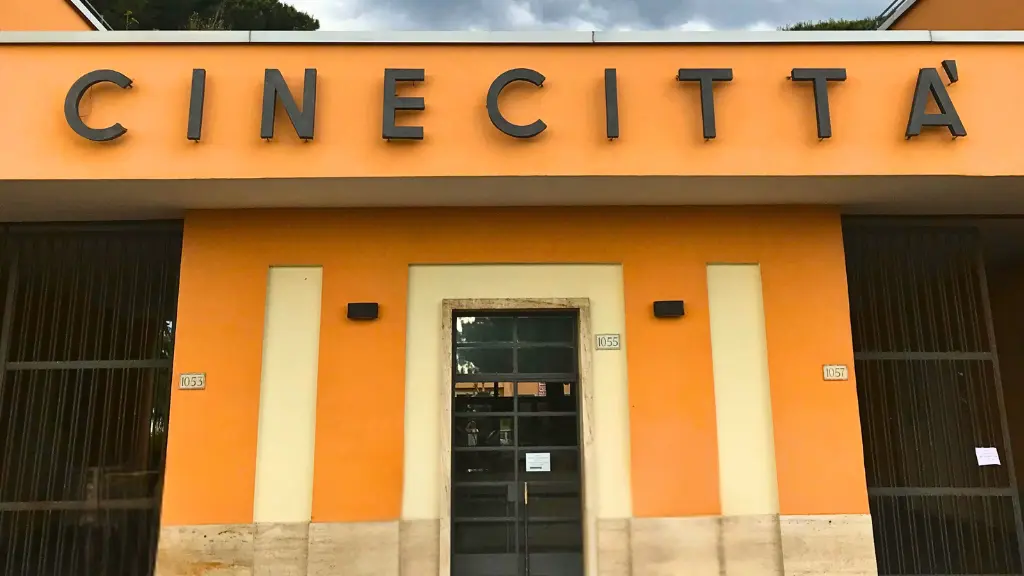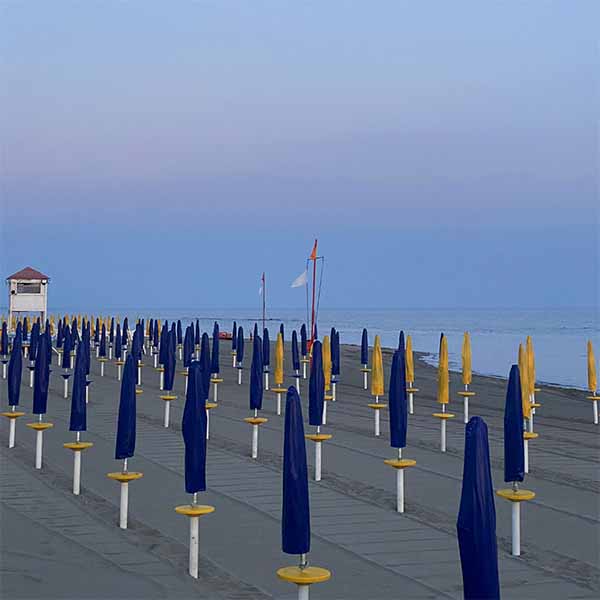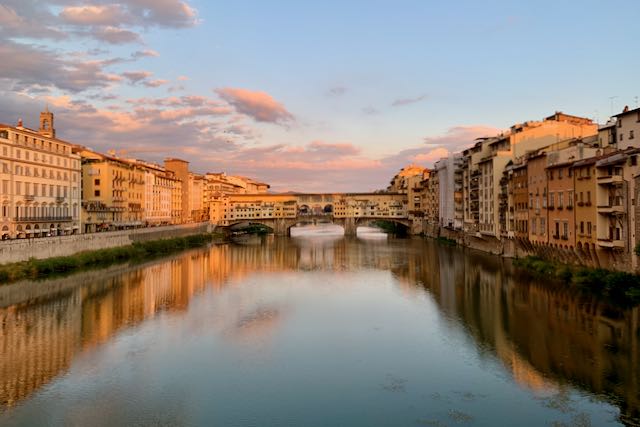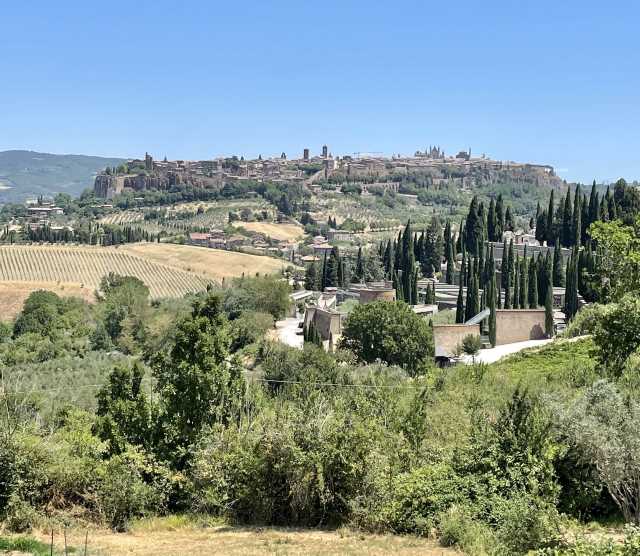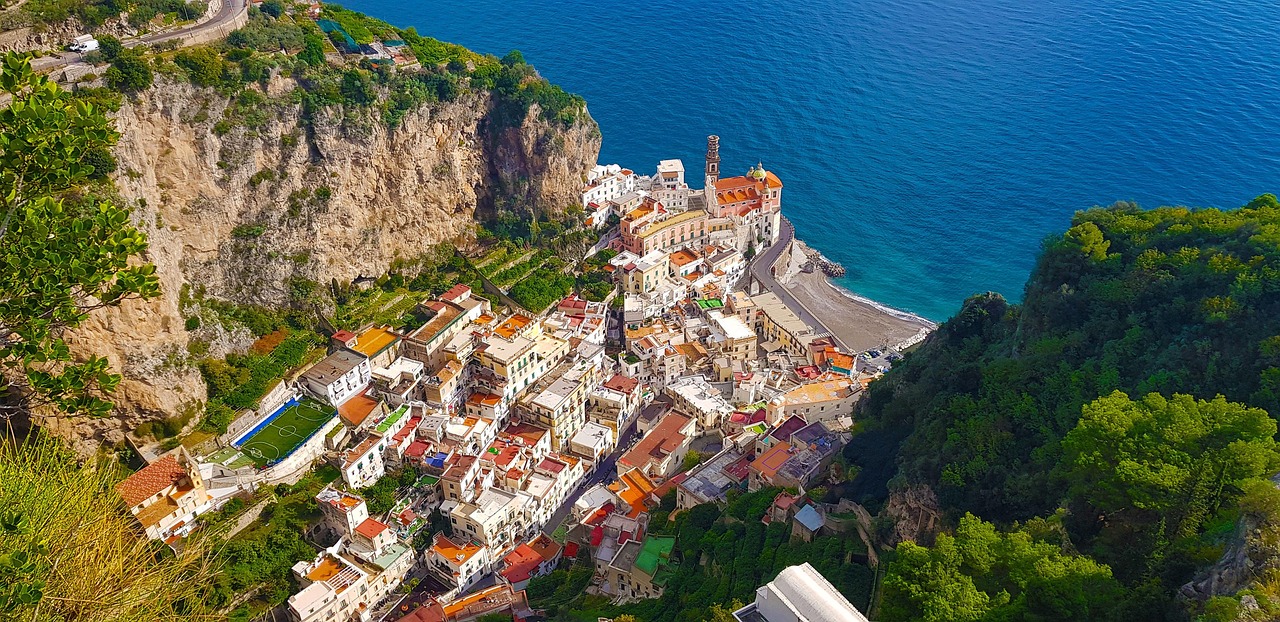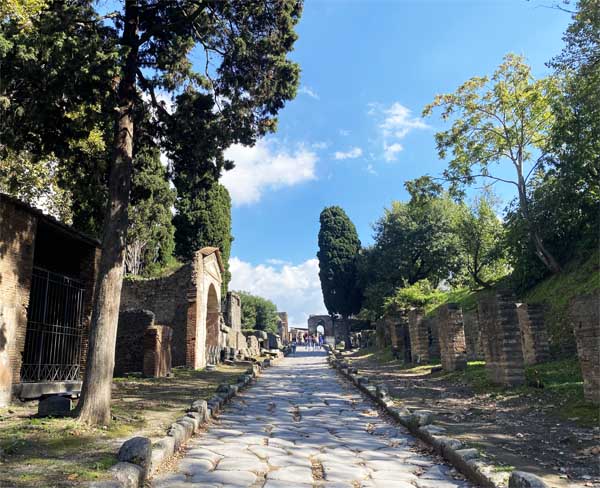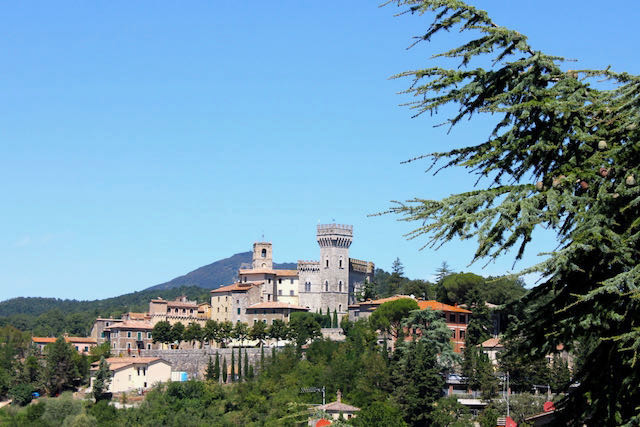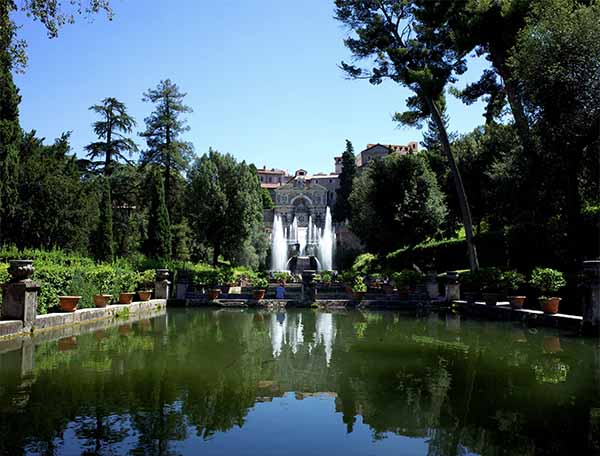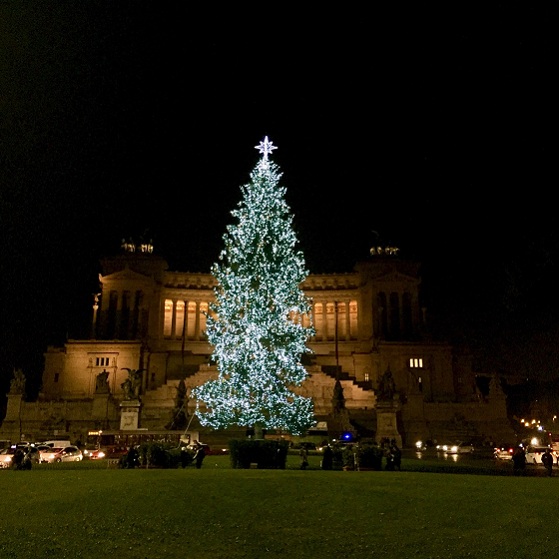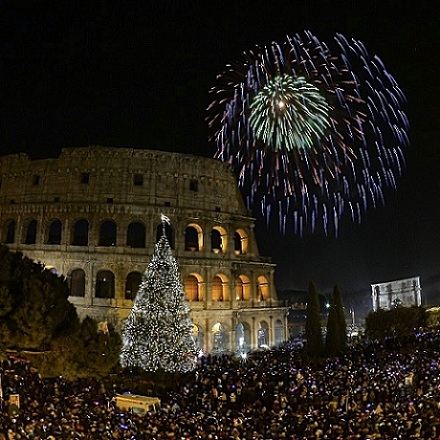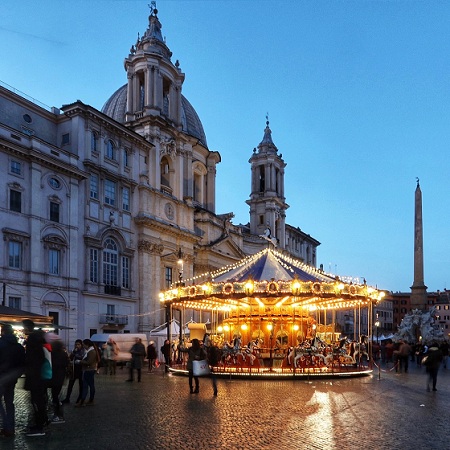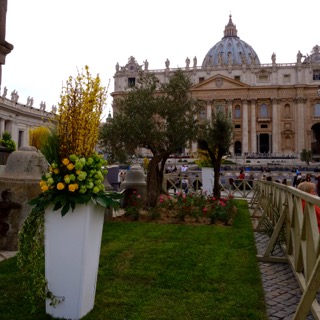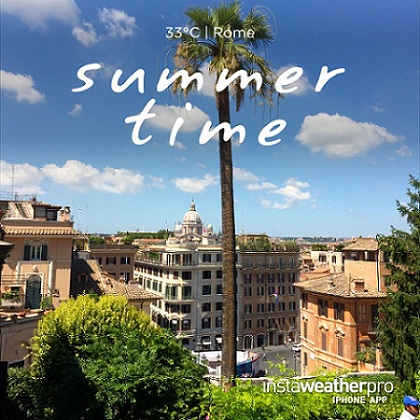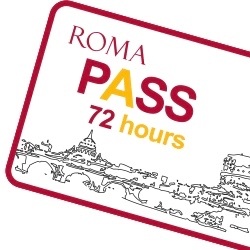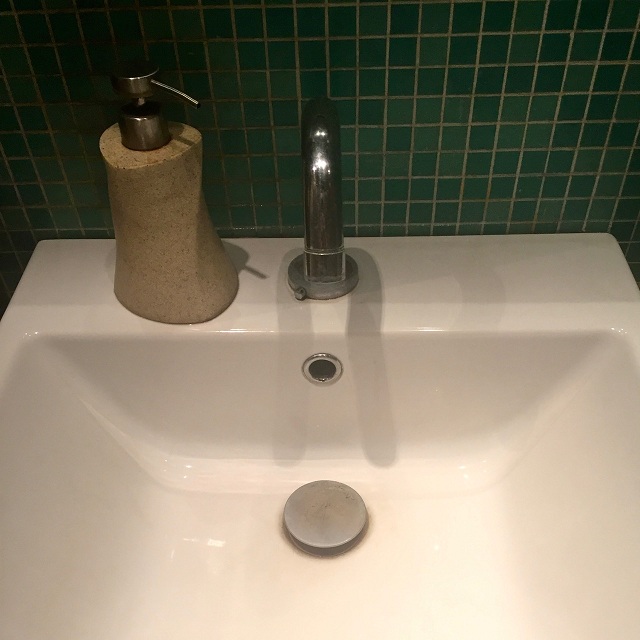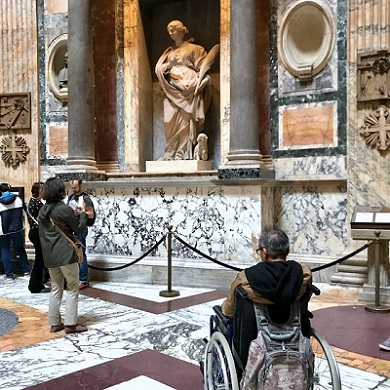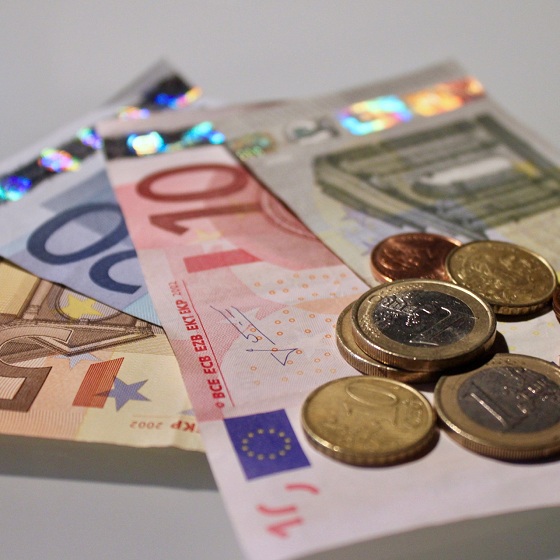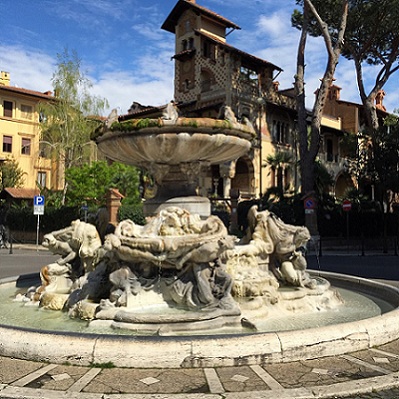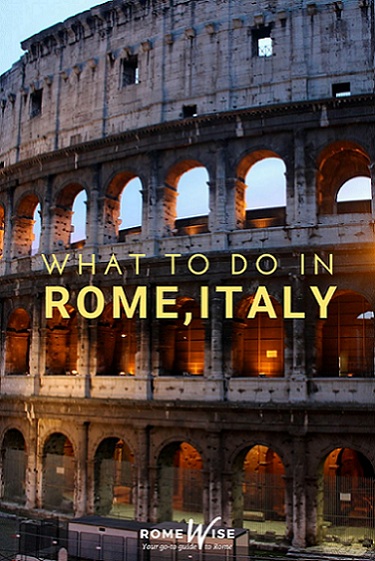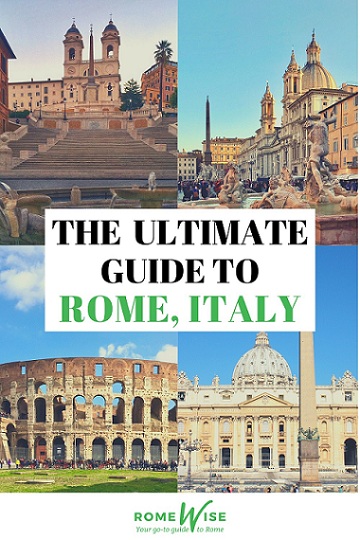- Sign up & get a FREE ebook Subscribe NOW!
- Romewise Home Page
- What to Do in Rome
What to Do in Rome
Wondering what to do in Rome?
The Romans say, non basta una vita!, which means, "A lifetime is not enough!"
I live here, and I have to agree.
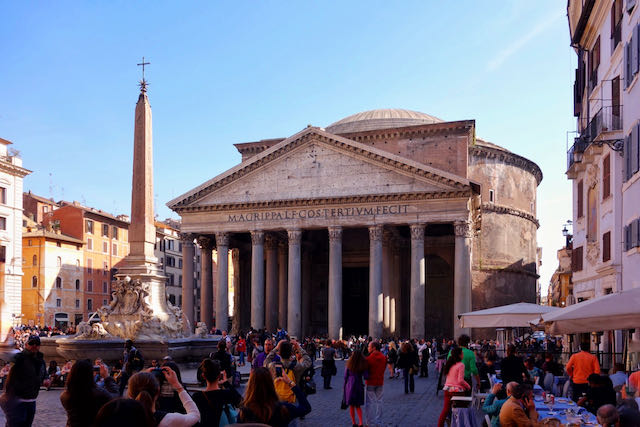 Wondering what to do in Rome? The Romans say, non basta una vita!, which means, "A lifetime is not enough!" I live here, and I have to agree.
Wondering what to do in Rome? The Romans say, non basta una vita!, which means, "A lifetime is not enough!" I live here, and I have to agree.What to do in Rome - a lifetime is not enough!
It's true, there really is always something new to see and do in Rome.
Tourism in Rome is my business and my life.
I am always discovering new things.
My husband Alessandro is from Rome, and he is often discovering new things along with me!
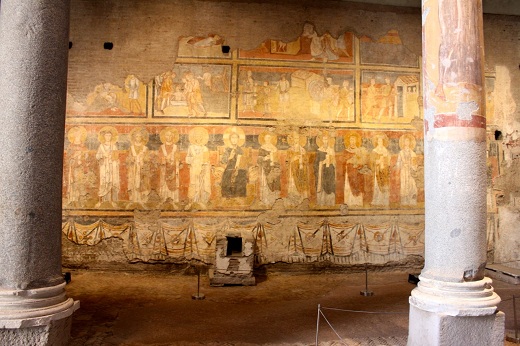 Santa Maria Antiqua in the Roman Forum - the "Sistine Chapel of the Medieval", was only opened to the public in 2016. There are always new things to see and do in Rome!
Santa Maria Antiqua in the Roman Forum - the "Sistine Chapel of the Medieval", was only opened to the public in 2016. There are always new things to see and do in Rome!Rome is so much more than just a city to fly into or out of, as I once did.
The more time you spend in Rome, the more you want to see.
Rome has over 2000 years of history, and you will find a rich wealth of art, architecture, and archeology, not to mention shopping and my favorite pastime in Rome: eating!
What to do in Rome on YOUR trip
Whether you have planned a short break to Rome or a 2-week trip; whether it's your first time in Rome, your 2nd time or 22nd time, I've got lots of suggestions for you!
- The Main Attractions
- Besides the Main Attractions
- What to do in Rome During the Holidays
- Suggested Itineraries for Rome
- What to do with kids in Rome
What to Do in Rome - The Main Attractions
I find the most typical visit to Rome is about 2 1/2 - 3 days.
If it's your first time visiting Rome, you should see the main sites and monuments and fountains.
These include:
It is possible to see the above sites in a 2-3 day visit to Rome.
And if you only have one day in Rome?
Here's how to see the highlights on a self-guided walking tour.
And if you want to see the Vatican and Colosseum in one day, find out how here!
But there is so much more to see.
The more time you spend in Rome, the more you realize you need more time here!
If you are not sure how much time you should spend in Rome, I'd suggest you try to add at least one more day if you can.
And if you can be here a whole week, even better!
All about the Rome Colosseum
What to Do in Rome - Besides the Main Attractions
Want some great ideas for things to do in Rome off the beaten track?
Come on over to my friend Rick Zullo's website, Rick's Rome, and listen to my guest appearance on his fabulous podcast.
Have you already been to Rome?
Do you have more than 3 days in Rome?
If so, then you may want to consider what to do in Rome besides visiting the above sites and monuments.
Even if you only have a short break in Rome, you may want to and be able to squeeze in some of these:
- Doing something outdoors, such as head to the beach, or enjoy a picnic, bike-ride or walking tour in Rome
- Attending an event in Rome, such as a concert, opera or show
- Check out Rome's virtual reality and light shows, that take you back in time
- Track down all of Rome's obelisks
What to do in Rome - Eating and Drinking
Where I eat and drink on a trip has a huge bearing on how much I enjoy the place I visit.
And in a city like Rome, where eating is practically an art form, and where drinking wine, coffee and more recently, the "aperitivo" are part of the joys of life, we are blessed to have more options than ever before.
Want even more detailed things to do in Rome?
See how many great things to do in Rome there are?
It's always a good idea to add another day or two on to your trip to Rome.
The perfect 3-day itinerary in Rome
Trying to figure out how to organize your visit to Rome? I've got the perfect 3-day itinerary for first-time visitors (or those who have not been here in a while.) It works for a 2.5 day visit as well.
In my 3-day itinerary, you'll see all the major must-see Rome attractions like the Vatican, Colosseum, Trevi Fountain, Pantheon, Piazza Navona, Spanish Steps, and much more.
And if you have more time, or want suggestions for extra/other things to do, you'll find that there too.
Visit my page with the best 3-day itinerary in Rome for first-timers.
Museums
Must-visit Museums
If you only have time for 1 museum, then one of these three should be on your list:
There are hundreds of museums in Rome.
Like the extraordinary collection of stained glass in the Casina delle Civette inside the Villa Torlonia, Mussolini's old party pad.
Never heard of it?
Visit my page about Museums in Rome for ideas and details, including which museums participate in the Roma Pass.
There are also plenty of free museums for you to visit!
🙌 See The Capitoline Museum Your Way 🙌
Enjoy this private tour of the Capitoline Museums with priority entry and expert commentary on its most celebrated masterpieces.
Churches
You cannot walk down many streets in Rome without seeing at least one church, I've lived here for years and there are still so many I haven't visited yet!
Some of the most important churches you shouldn't miss out on are:
If you're interested in visiting churches there are many more to add to your itinerary!
Take a look at some of my favorite off-the-beaten-track churches here, and don't forget Rome's cemeteries!
The catacombs of Rome are also well worth a visit - my dedicated page takes you through all the available options.
Shopping
You can easily fit in some shopping even on a 2-3 day visit to Rome.
Want to know where the best shopping is?
Visit my ultimate guide to Shopping in Rome.
Many of the main sites such as the Spanish Steps, Pantheon and Piazza Navona are right in the center of Rome, and there is shopping all around.
Jump start your trip to Rome with a free ebook 😀
Sign-up to our free newsletter and receive our Quick Start Guide to Rome ebook which share's everything you need to know to plan the perfect trip to the Eternal City 🙌
Seeing the Pope
If you want to see the pope while you are in Rome, you might still be able to fit it in, even for a short visit.
Your best chances are if you are here on a Wednesday for the Papal Audience, or a Sunday for the Angelus in Vatican Square (as long as Pope Leo is in town.)
Find out more about Seeing the Pope in Rome.
Want tickets to the Papal Audience or Papal Masses?
The Vatican
Visiting the Vatican is at the top of most people's list of what to do in Rome.
I've got lots of pages just about this!
Enjoying the Outdoors
Rome has mostly mild weather although we do get cold and rainy winters.
But even in winter, you can enjoy some lots of outdoor activities in Rome.
Music and Other Events in Rome
Some people plan their trips to Rome around a specific music or sports event.
Every year we see people booking long in advance for weekends there are Six-Nations Rugby matches held in Rome.
Or for the Rome Marathon, held every year in March.
We also get some pretty big-name concerts in Rome, such as the Rolling Stones, Madonna and Paul McCartney.
But even if you didn't plan for it, there are always lots of great things happening in Rome.
To find out more about Events in Rome, visit the official Rome tourist board website.
Exploring outside of Rome
If you've got the time in your itinerary, including a trip out of Rome to explore the rest of Italy is a great idea!
Here are some suggestions for where to go and what to do:
Ready to plan your trip?
Book your train
Planning to travel between cities in Italy and other parts of Europe?
Use Trainline to see all the different options available across the different rail companies.
Find your hotel
Find your perfect place to stay in Rome.
Use Booking.com to choose between hotels, guesthouses, and self-catering apartments in neighborhoods throughout the Eternal City.
Buy your TurboPass
Purchase the convenient Turbopass and visit all of Rome's top attractions including the Colosseum, Pantheon, and Vatican.
With one handy pass, it's all included.
What to do in Rome During Holidays
Will you be in Rome during a holiday?
Find out what's happening, what the weather's like, what to do and what to expect:
Don't forget to bring these essential travel items with you!
Disclosure: If you make a purchase through a link on this page, I may receive a small commission - at no extra cost to you. Thank you for supporting my site!
Itineraries
Most of the itineraries I have seen suggested for Rome include visits to the main sites (see top list), spread out over 1-4 days.
At our Rome boutique hotel, we used to help thousands of visitors get the most out of their stay, according to their tastes.
So I have really seen the gamut of requests for what do in Rome.
I have dedicated many pages to this, as there is more than just one standard answer.
You might be interested in one of these pages:
- Free things to do in Rome
- How to Escape the Crowds in Rome
- One Day in Rome
- Seeing the Rome Highlights in One Day
- Three Days in Rome itinerary
- 7 Days in Rome Italy itinerary
What to Do in Rome - Practical Matters
You are planning your trip to Rome and thinking about all the great things to see and do.
You might also want to be prepared for these practical matters too:
Romewise's Top Travel Resources
Ready to book your trip to Rome? Take a look at these helpful links to companies we use and trust:
- Keep your travel spending simple with the Wise card, which removes all the worry about exchange rates and high transaction fees all over the world
- Search for and book your perfect accommodation
- Our complete guide to what to pack for Rome
- The number one travel accessory, a multi-point travel adapter and voltage converter
- Browse a huge range of tours in Rome and beyond
- Experience unique tours and special access to Rome's most popular sights
- Protect yourself with comprehensive travel insurance
Within this post there are some affiliate links for products and services. For more details about our affiliate policy click here.
Get your 100% free Rome trip planner now!
Simply sign-up today for our free newsletter and get the Romewise Quick Start guide to Rome:
We are committed to respecting your data. Click for our Privacy Policy.
Comments? Questions? Suggestions?
Please come over to the private Romewise Facebook group and join in the conversation.
You will often find me there, happy to answer your questions / comments!
You will also meet other Rome lovers and experts, too.
What are you waiting for?
- Romewise Home Page
- What to Do in Rome

